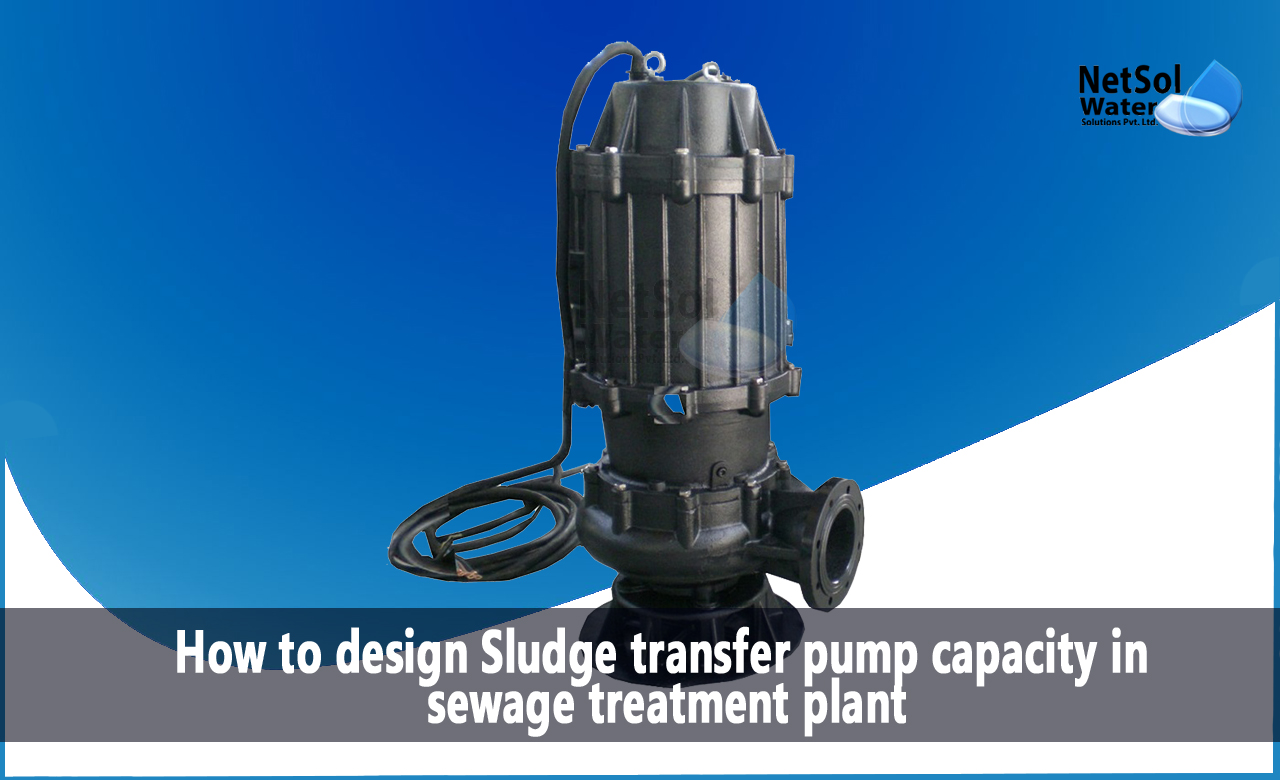How to design Sludge transfer pump capacity in sewage treatment plant?
Sludge transfer pumps play a crucial role in the operation of sewage treatment plants, as they are responsible for moving the sludge from one part of the plant to another. To ensure efficient and effective sludge transfer, it is essential to choose the right capacity pump.
In this blog, we will discuss the design and formula to select the right capacity pump for sewage treatment plants.
Design of Sludge Transfer Pump
The design of a sludge transfer pump will depend on the specific needs of the sewage treatment plant. Some of the factors that should be considered when designing a sludge transfer pump include:
- Sludge Characteristics: The characteristics of the sludge being transferred, such as its viscosity, solids content, and specific gravity, will influence the design of the pump.
- Distance and Elevation: The distance between the source of the sludge and the destination, as well as the elevation difference between the two, will affect the required flow rate and pump head.
- Pipeline Diameter: The diameter of the pipeline that will be used to transfer the sludge will also impact the design of the pump.
Formula for Selecting the Right Capacity Pump
The formula used to calculate the capacity of the sludge transfer pump will depend on the specific application. However, the following general formula can be used as a starting point:
Q = A × V
Where:
Q = flow rate required (m3/h) A = area of the pipeline (m2) V = velocity of the sludge in the pipeline (m/s)
To determine the area of the pipeline, the following formula can be used:
A = π × (d/2)2
Where:
A = area of the pipeline (m2) π = 3.14 (a constant) d = diameter of the pipeline (m)
To calculate the velocity of the sludge in the pipeline, the following formula can be used:
V = Q / A
Where:
V = velocity of the sludge in the pipeline (m/s) Q = flow rate required (m3/h) A = area of the pipeline (m2)
Once the flow rate and velocity of the sludge have been determined, the required head (pressure) for the pump can be calculated using the following formula:
H = (ρ × g × Hf) + Hs + Hf
Where:
H = total head required (m) ρ = density of the sludge (kg/m3) g = acceleration due to gravity (9.81 m/s2) Hf = frictional losses in the pipeline (m) Hs = static head (elevation difference between the source and destination) (m)
The frictional losses in the pipeline can be calculated using the Darcy-Weisbach equation:
Hf = (f × L × V2) / (2 × d × g)
Where:
Hf = frictional losses in the pipeline (m) f = Darcy-Weisbach friction factor (dimensionless) L = length of the pipeline (m) V = velocity of the sludge in the pipeline (m/s) d = diameter of the pipeline (m) g = acceleration due to gravity (9.81 m/s2)
The Darcy-Weisbach friction factor can be determined using Moody's chart or other methods.
The formula for the pump efficiency is:
Efficiency = (output power / input power) x 100
Where output power is the power required to move the sludge and input power is the power supplied to the pump.
Conclusion:
Selecting the right capacity pump for a sewage treatment plant is essential to ensure efficient and effective sludge transfer. By considering the characteristics of the sludge, distance and elevation, and pipeline diameter, and using the formulas outlined above, it is possible to determine the flow rate, velocity, and head required for the pump. With this information, the appropriate sludge transfer pump can be selected, ensuring optimal operation of the sewage treatment plant.
Netsol Water is Greater Noida-based leading water & wastewater treatment plant manufacturer. We are industry's most demanding company based on client review and work quality. We are known as best sewage treatment plant manufacturer, Water Softener Plant Manufacturers and effluent treatment plant manufacturers. Apart from this 24x7 customer support is our USP. Call on +91-9650608473, or write us at enquiry@netsolwater.com for any support, inquiry or product-purchase related query.



